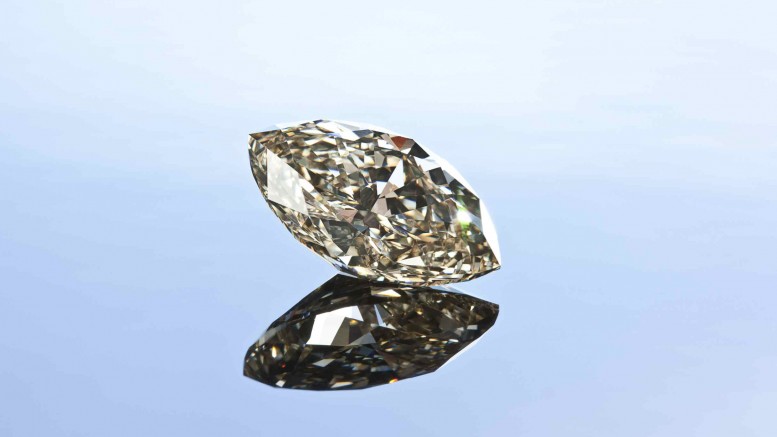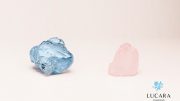Now that Shore Gold (SGF-T) has released a positive feasibility study for the Star-Orion project, in Saskatchewan, the only question that remains is how to fund the large, but low-grade project, which comes with a $1.9-billion preproduction price tag.
“The numbers are big, but I believe that in a world where there is a great demand for diamonds there is an undersupply of rough, it’s merely a matter of time before big companies will get interested,” says George Read, the company’s senior vice-president of exploration and development.
Shore’s partner at the Fort à la Corne joint venture that hosts the Orion South kimberlite, Newmont Mining (NMC-T, NEM-N), is currently reviewing the feasibility. The major is expected to make a decision on whether to participate in funding the project before the end of the year.
As of the end of 2010, Newmont owned 34% of the FalC JV while Shore owns 100% of the nearby Star kimberlite. Newmont has not participated in financing the project since early 2009 and has seen its interest diluted down from 40%.
Shore released the results of a feasibility study in July that increased the pretax net present value (NPV) of the project up to $2.1 billion (after taxes and royalties $1.3 billion), from $1.3 billion (or $796 million after taxes) in an early 2010 prefeasibility study. The pretax internal rate of return (IRR) remained at 16% (after taxes and royalties, the IRR improved slightly to 14% from 13.5%). A discount rate of 7% was used.
Preproduction capital costs increased to $1.9 billion from $1.6 billion, but life-of mine capex remains at $2.5 billion. The payback period for Star-Orion has risen to 5.3 years (up from 4.6 years).
The 45,000-tonne-per-day, open-pit operation is expected to produce 34.4 million carats over a 20-year mine life.
Star-Orion has probable reserves of 279 million diluted tonnes at a weighted average grade of 12.3 carats per hundred tonnes (cpht). It has another 80.3 million inferred tonnes grading 11.3 cpht for 9.1 million carats.
(The cost of excavating the inferred resource was included in the feasibility study, but not the cost of processing it or the revenue that it would generate.)
In light of the continued strength of the Canadian dollar, the study used an exchange rate of US$94.5¢, up from US85¢ in the prefeasibility, and February 2011 diamond prices plus 15%, which amounts to US$242 per carat. By July, when the feasibility study came out, rough prices had increased 30-35% over those in the February 2011 WWW International Diamond Consultants price book.
Read says the company is working to get the story out that the feasibility is strong and that there’s more upside on top of it.
“Star and Orion South are just the beginning,” Read says, pointing to nearly a billion additional tonnes of diamondiferous kimberlite at the project, including the Orion North and Taurus kimberlite cluster to the west. “While we have developed geological models on those kimberlites — we know the contained tonnage very well — we don’t know the diamond grade or the diamond value.”
Another area where Read sees a lot of potential for improvement in the Star-Orion feasibility is trafficability, which relates to the weight of truck that can be used to haul ore out of the open pits. Properties of some of the soils in the overburden and the underlying Manneville sediments at Star-Orion make for poor trafficability, and Read says the consultants that prepared the feasibility study were very conservative in their measurements of trafficability. The feasibility looked only at using lighter, 150-tonne haul trucks, as well as shallow pit slopes.
“We think there could be opportunity to use larger trucks — probably a 260-tonne haul truck — which means you make fewer trips and it makes for a more efficient exercise,” Read says.
The company is conducting more geotechnical test work to study alternative scenarios.
While the project’s price tag is large, the diamonds are “spectacular,” says Read, a former De Beers geologist with global experience. The project contains a relatively high proportion of Type IIa diamonds, which are nitrogen-free and typically high value.
The rise in rough prices evident since the financial crisis — and even during the past year — doesn’t hurt either.
An 11.96-carat Type IIa diamond from the Early Joli Fou (EJF) unit of the Star kimberlite was worth US$18,000 per carat (or US$215,190 in total) in July — up from US$15,000 per carat in February.
Read also anticipates diamonds of 100 carats or more would occasionally be recovered from a mine at Star-Orion (bulk sampling has returned two stones of around 50 carats each).
To stick to the schedule outlined in the feasibility, with construction beginning in the third quarter of 2012 and production in early 2017, Read says the company would need some money in place before the middle of next year, by which time Shore anticipates having permits from both the federal and provincial levels of government.
“Certainly, we would like to place some long-lead order items earlyish next year, but we have some time to raise money.”
At this point, Read says the company is considering all options for financing.
The project’s environmental impact assessment will likely be released for public input before the end of the year.
Shore is working toward signing impact benefit agreements with local First Nations and has signed information gathering agreements with nine different groups.
Shore Gold recently traded at 47.5¢ per share in a 52-week range of 43-98¢. It has 224.6 million shares outstanding.




Be the first to comment on "Shore Gold in financing mode"